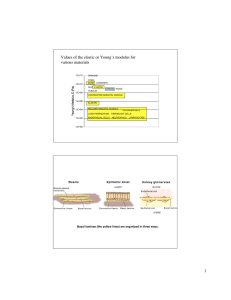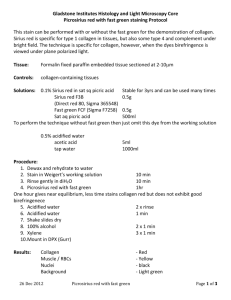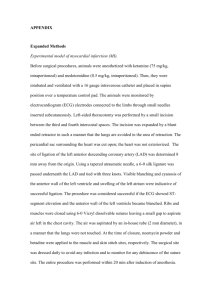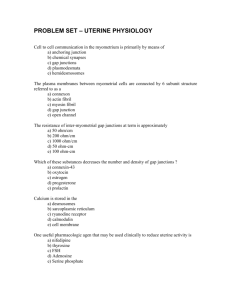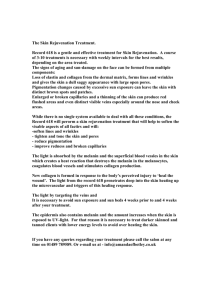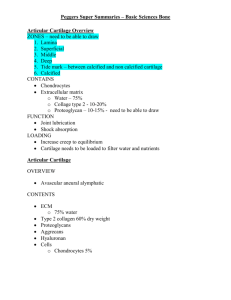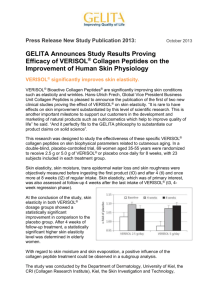Comparison of End Restraints for the Molecular Dynamic
advertisement
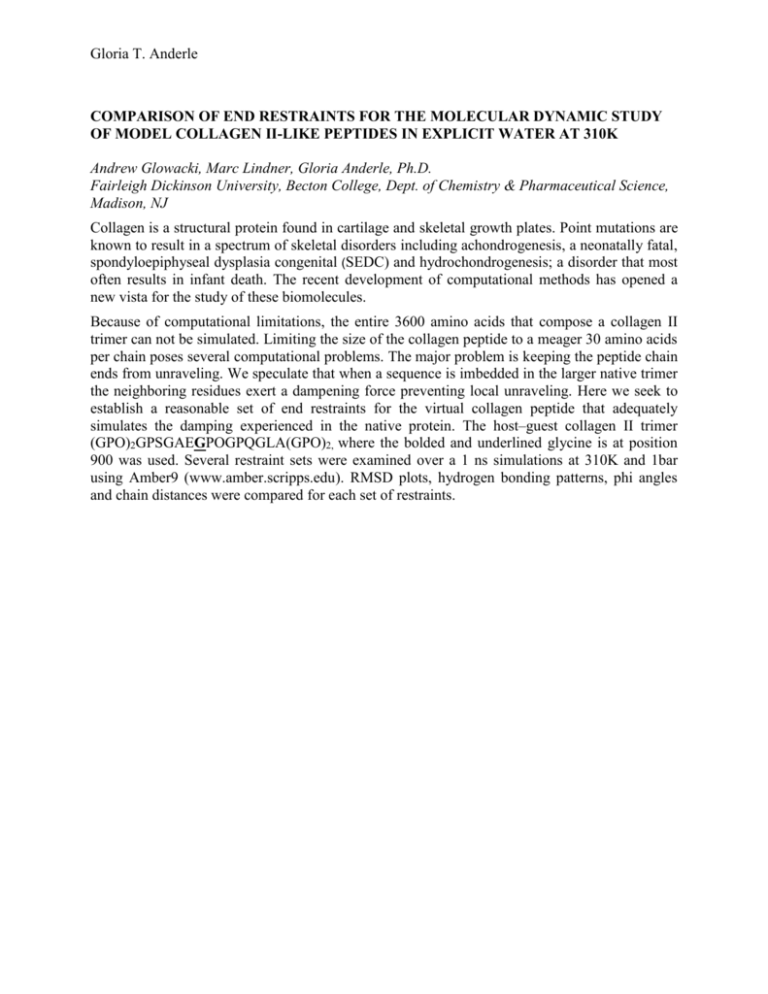
Gloria T. Anderle COMPARISON OF END RESTRAINTS FOR THE MOLECULAR DYNAMIC STUDY OF MODEL COLLAGEN II-LIKE PEPTIDES IN EXPLICIT WATER AT 310K Andrew Glowacki, Marc Lindner, Gloria Anderle, Ph.D. Fairleigh Dickinson University, Becton College, Dept. of Chemistry & Pharmaceutical Science, Madison, NJ Collagen is a structural protein found in cartilage and skeletal growth plates. Point mutations are known to result in a spectrum of skeletal disorders including achondrogenesis, a neonatally fatal, spondyloepiphyseal dysplasia congenital (SEDC) and hydrochondrogenesis; a disorder that most often results in infant death. The recent development of computational methods has opened a new vista for the study of these biomolecules. Because of computational limitations, the entire 3600 amino acids that compose a collagen II trimer can not be simulated. Limiting the size of the collagen peptide to a meager 30 amino acids per chain poses several computational problems. The major problem is keeping the peptide chain ends from unraveling. We speculate that when a sequence is imbedded in the larger native trimer the neighboring residues exert a dampening force preventing local unraveling. Here we seek to establish a reasonable set of end restraints for the virtual collagen peptide that adequately simulates the damping experienced in the native protein. The host–guest collagen II trimer (GPO)2GPSGAEGPOGPQGLA(GPO)2, where the bolded and underlined glycine is at position 900 was used. Several restraint sets were examined over a 1 ns simulations at 310K and 1bar using Amber9 (www.amber.scripps.edu). RMSD plots, hydrogen bonding patterns, phi angles and chain distances were compared for each set of restraints.


